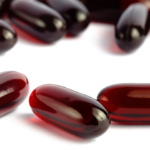Weight Loss Injections: Do They Really Work? A Comprehensive Guide
The quest for effective weight loss solutions is a continuous pursuit for many. In recent years, weight loss injections have emerged as a promising, albeit controversial, option. This comprehensive guide delves into the world of these injections, exploring their mechanisms, efficacy, potential side effects, and the crucial factors to consider before embarking on this weight loss journey.
Understanding the Landscape: Types of Weight Loss Injections
The term “weight loss injection” encompasses various medications, each working through distinct pathways to promote weight reduction. It’s crucial to differentiate between them to understand their individual benefits and risks.
-
GLP-1 Receptor Agonists (e.g., Semaglutide, Liraglutide, Tirzepatide): These are arguably the most talked-about weight loss injections today. GLP-1 (Glucagon-Like Peptide-1) is a naturally occurring hormone that plays a significant role in regulating appetite and blood sugar levels. These medications mimic the action of GLP-1, leading to several effects:
- Slower Gastric Emptying: Food stays in the stomach longer, promoting a feeling of fullness and reducing the desire to eat more.
- Increased Insulin Release: In response to elevated blood sugar levels, GLP-1 receptor agonists stimulate the pancreas to release more insulin, helping to regulate blood sugar.
- Reduced Glucagon Secretion: Glucagon is a hormone that raises blood sugar levels. GLP-1 receptor agonists suppress glucagon secretion, further contributing to blood sugar control.
- Appetite Suppression: By acting on the brain, these medications can reduce appetite and cravings, making it easier to adhere to a calorie-restricted diet.
Examples include:
- Semaglutide (Wegovy, Ozempic): Wegovy is specifically approved for weight loss, while Ozempic is primarily used for type 2 diabetes but often leads to weight loss as a side effect.
- Liraglutide (Saxenda, Victoza): Similar to semaglutide, Saxenda is approved for weight loss, and Victoza is for type 2 diabetes.
- Tirzepatide (Mounjaro): This medication is a dual GIP and GLP-1 receptor agonist, potentially offering even greater weight loss benefits compared to GLP-1 receptor agonists alone. It is currently approved for type 2 diabetes, but studies have shown significant weight loss.
-
HCG (Human Chorionic Gonadotropin): This hormone is produced during pregnancy. The HCG diet, which involves daily HCG injections and a very low-calorie diet (typically 500 calories per day), was once a popular weight loss trend. However, the FDA has not approved HCG for weight loss and considers it ineffective and potentially dangerous. The weight loss associated with the HCG diet is primarily attributed to the severe calorie restriction, not the hormone itself.
-
Lipotropic Injections (e.g., MIC injections): These injections typically contain a combination of ingredients, including:
- Methionine: An essential amino acid that helps break down fats, lower cholesterol, and remove heavy metals from the body.
- Inositol: A vitamin-like substance that plays a role in fat metabolism and insulin signaling.
- Choline: An essential nutrient that helps transport fats out of the liver and prevents fat buildup.
- Vitamin B12: Supports energy production and metabolism.
- L-Carnitine: Helps transport fatty acids into the mitochondria, where they can be burned for energy.
While proponents claim that lipotropic injections can boost metabolism, burn fat, and increase energy levels, scientific evidence supporting these claims is limited. Most studies are small or poorly designed, making it difficult to draw definitive conclusions.
Do They Really Work? The Evidence-Based Perspective
The efficacy of weight loss injections varies depending on the type of injection and the individual.
-
GLP-1 Receptor Agonists: Clinical trials have demonstrated that GLP-1 receptor agonists are highly effective for weight loss. Studies have shown that individuals taking semaglutide (Wegovy) can achieve an average weight loss of 15-20% of their initial body weight when combined with lifestyle modifications (diet and exercise). Liraglutide (Saxenda) has also been shown to produce significant weight loss, although typically less than semaglutide. Tirzepatide has shown even more promising results in clinical trials.
-
HCG: As mentioned earlier, there is no scientific evidence to support the use of HCG for weight loss. The FDA has not approved HCG for this purpose.
-
Lipotropic Injections: The evidence supporting the efficacy of lipotropic injections for weight loss is weak. While the individual components of these injections may have some metabolic effects, there is no strong evidence that they significantly contribute to weight loss when administered as injections.
Potential Side Effects and Risks
Like all medications, weight loss injections can cause side effects. It’s crucial to be aware of these potential risks before considering this treatment option.
-
GLP-1 Receptor Agonists: Common side effects include nausea, vomiting, diarrhea, constipation, abdominal pain, and decreased appetite. More serious but less common side effects can include pancreatitis, gallbladder problems, and kidney problems. In rare cases, semaglutide has been linked to an increased risk of thyroid C-cell tumors in animal studies, although it’s unclear if this risk applies to humans.
-
HCG: The HCG diet is associated with several risks, including fatigue, headaches, irritability, nutrient deficiencies (due to the severely restricted calorie intake), and an increased risk of blood clots.
-
Lipotropic Injections: Side effects are generally mild and may include pain or redness at the injection site, nausea, and diarrhea. Allergic reactions are also possible.
Important Considerations Before Starting Weight Loss Injections
-
Consultation with a Healthcare Professional: It’s essential to consult with a qualified healthcare professional before starting any weight loss injection. They can assess your individual medical history, evaluate your overall health, and determine if you are a suitable candidate for this treatment option.
-
Lifestyle Modifications: Weight loss injections are most effective when combined with lifestyle modifications, including a healthy diet and regular exercise. They are not a magic bullet and should not be used as a substitute for healthy habits.
-
Cost: Weight loss injections can be expensive, and they may not be covered by insurance. It’s important to consider the cost of the medication, as well as the cost of doctor’s visits and any necessary lab tests.
-
Long-Term Use: The long-term safety and efficacy of some weight loss injections are still being studied. It’s important to discuss the potential risks and benefits of long-term use with your healthcare provider.
-
Underlying Medical Conditions: Certain medical conditions, such as thyroid disorders, gallbladder disease, and kidney disease, may increase the risk of side effects from weight loss injections.
-
Realistic Expectations: It’s important to have realistic expectations about the amount of weight loss you can expect to achieve with weight loss injections. While they can be effective, they are not a guarantee of success.
The Bottom Line: Are Weight Loss Injections Right for You?
Weight loss injections, particularly GLP-1 receptor agonists, can be a valuable tool for weight management, especially for individuals with obesity or related health conditions. However, they are not a one-size-fits-all solution. Careful consideration of the potential benefits, risks, and costs, along with a thorough consultation with a healthcare professional, is crucial to making an informed decision. Remember that sustainable weight loss ultimately depends on adopting healthy lifestyle habits, and weight loss injections should be viewed as an adjunct to, not a replacement for, these essential changes.





